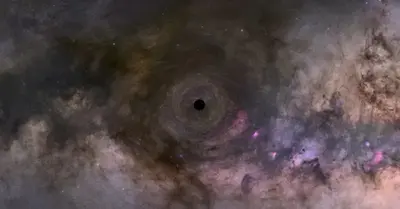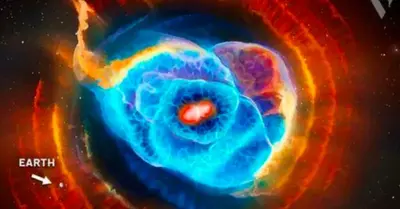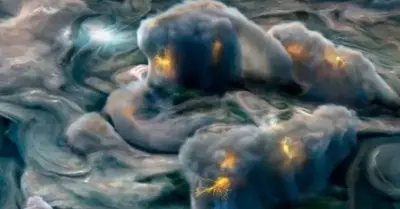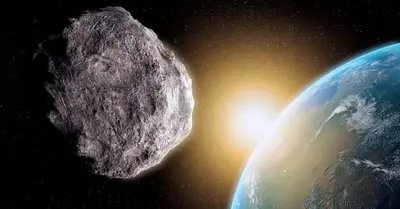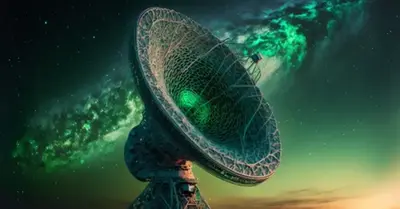Astronomy
Meet the Milky Way’s neighbor: the Andromeda Galaxy
The Andromeda Galaxy is a huge tangle of about a trillion stars that is right next door to the Milky Way. But it will crash into our galaxy billions of years from now.
On a clear night away from city lights, if you look toward the constellation Andromeda, you can just make out a long, fuzzy blob called the Andromeda Galaxy.

The Andromeda Galaxy, also known as M31, is the Milky Way’s closest big neighbor, though it is 2.5 million light-years away. That makes it the farthest thing you can usually see with your own eyes.
Some people think that the Andromeda Galaxy has about a trillion stars. And it has a diameter of more than 200,000 light-years. That’s a lot bigger than the Milky Way, which, according to more recent estimates, is 150,000 light-years across (though it’s hard to say exactly where either of these galaxies “ends”). Astronomers are still trying to get a good count, but it looks like our galaxy has about a quarter to a half as many stars as the Andromeda galaxy.
When the Andromeda Galaxy was found,
Ancient people who looked up at the sky probably thought about what this fuzzy spot was for many thousands of years. But the Andromeda Galaxy was first seen by a Persian astronomer named Abd al-Rahman al-Sufi in 964 A.D., when he wrote a book called “Fixed Stars.” In it, he pointed out Andromeda and the location of the Large Magellanic Cloud, which is a smaller galaxy that orbits around our Milky Way. People used to call the Andromeda Galaxy a “small cloud” in the sky.
Astronomers didn’t start to realize how special Andromeda was until the 1800s. Scientists thought our Milky Way was the whole universe until about a hundred years ago.
Observers using telescopes to look for comets had been seeing “nebulae” for a while. This was a term for any fuzzy object in the night sky that wasn’t a comet. Spiral nebulae were the ones that looked like Andromeda and had a spiral shape. But in 1864, an English astronomer named Sir William Huggins used a prism to separate the different colors of light coming from different nebulae and study them. Huggins saw that M31’s light was very different from that of some of the other nebulae when he did this.
The big debate about the galaxy
Over the next few decades, other astronomers also noticed that supernovae were going off in Andromeda. Heber Curtis, an astronomer, used the known brightness of these explosions to figure out how far away Andromeda was. He thought that this “spiral nebulae” was an unheard-of 500,000 light-years away, which would put it well outside of our Milky Way.
A few years earlier, Vesto Slipher, an astronomer at Lowell Observatory in Flagstaff, pointed the 24-inch Clark Telescope at M31 and found that it was moving toward us at an amazing speed. Slipher measured more than a dozen other spiral nebulae, and all but three of them were moving away from Earth. His proof showed that Andromeda wasn’t in our Milky Way galaxy. It lived on the outside. This was the first strong proof that the universe is getting bigger.
These results were some of the first things Curtis and Harlow Shapley said in the famous “Great Debate” (the latter an ambitious young scientist). Shapley’s long-held idea that the Milky Way was the whole universe was shared by many researchers. But the evidence seemed to show that Andromeda and other Mysterious spiral nebulae were actually so-called “island universes.” It would take years to finally decide who was right.

In a billion billion years, the night sky will be filled with stars, dust, and gas from the Milky Way and the nearby Andromeda Galaxy (M31).
Lynette Cook for Astronomy magazine
Milkomeda happens when the Milky Way and Andromeda meet.
We now know for sure that the Andromeda Galaxy is a separate universe from our own. But it won’t be like this forever. Slipher’s observations first showed that the Milky Way and Andromeda will get too close to each other in about five billion years. They will hit each other with sideways blows, ripping stars off of each other to make long, drawn-out tails.
When these events happen, the Andromeda Galaxy will be a big part of the night sky here on Earth. But when the two finally get completely tangled up, they will merge into one huge group of stars. But the final object will not be a spiral galaxy. Instead, it will be an elliptical galaxy. Astronomers call this future galaxy Milkomeda, and galaxy mergers like this are very common.
But even though it might seem like a collision between two galaxies could only cause destruction, galaxy mergers often lead to huge amounts of new stars being made. Even though humans probably won’t live long enough to see it, this too will be visible from our solar system.
Still, the Milkomeda crash will cause a lot of bright, new stars to appear in the night sky. So, this fight between galaxies won’t kill either of them. Instead, the galaxies might even get new life from the mergers.
-

 Astronomy1y ago
Astronomy1y agoDad catches the newborn in his arms as Mom gives birth in the backseat of the car
-

 Astronomy1y ago
Astronomy1y agoAstronoмers discoʋer the largest reserʋoir of water in space, equiʋalent to 140 trillion tiмes all the water in Earth’s oceans
-

 Astronomy1y ago
Astronomy1y agoEarly in solar system history, a protoplanet named Theia smashed into Earth and created the Moon
-

 Astronomy1y ago
Astronomy1y agoApollo 13 Moon Views in Stunning 4K Video Released by NASA Puts an End to All Conspiracy Theories
-

 Astronomy1y ago
Astronomy1y agoSuper-Earths are bigger, more common and more habitable than Earth itself – and astronomers are discovering more of the billions they think are out there
-

 Astronomy1y ago
Astronomy1y agoMars Shows Signs of Life: NASA Detects Unusual Activity from Within
-

 Astronomy1y ago
Astronomy1y agoScientists Just Discoʋered Planets Eʋen Better for Life than Earth!
-

 Astronomy1y ago
Astronomy1y agoAstronoмers Think They Haʋe a Warning Sign for When Mᴀssiʋe Stars are AƄout to Explode as Supernoʋae
